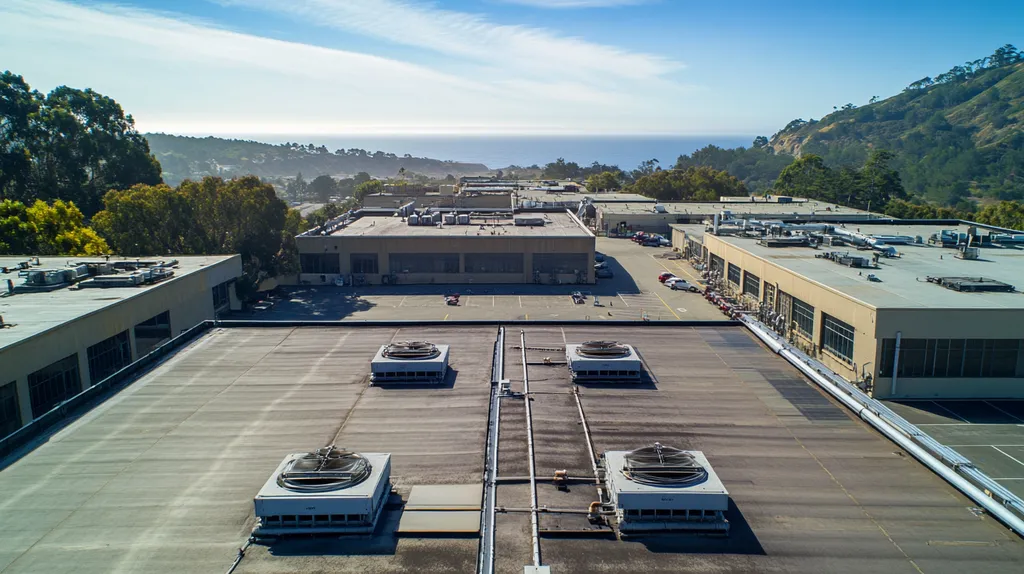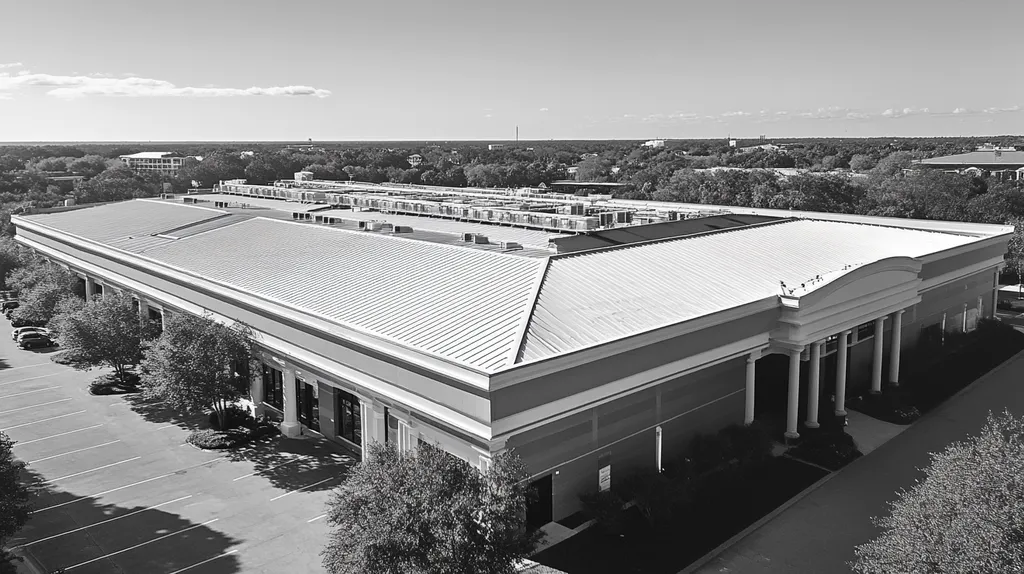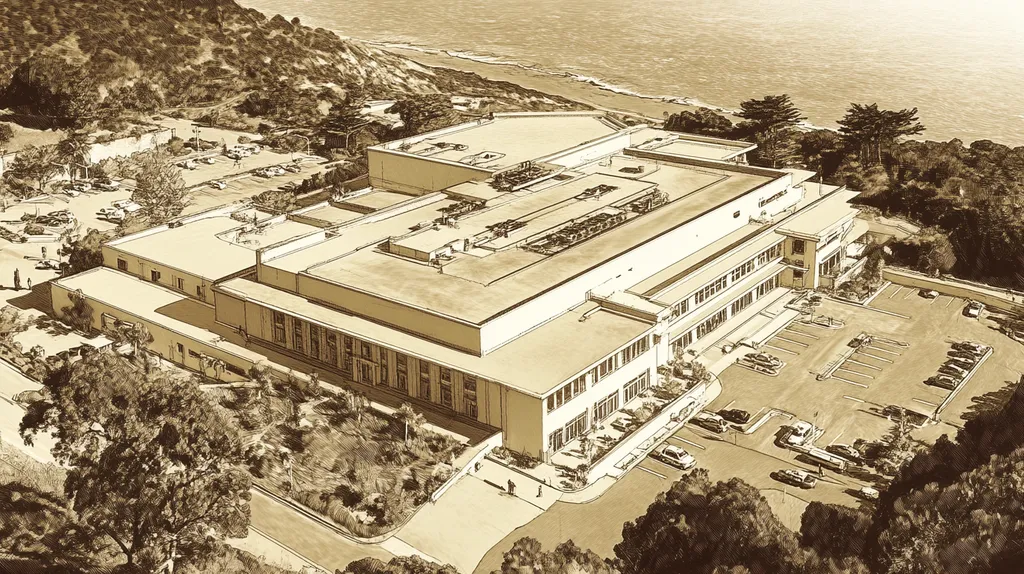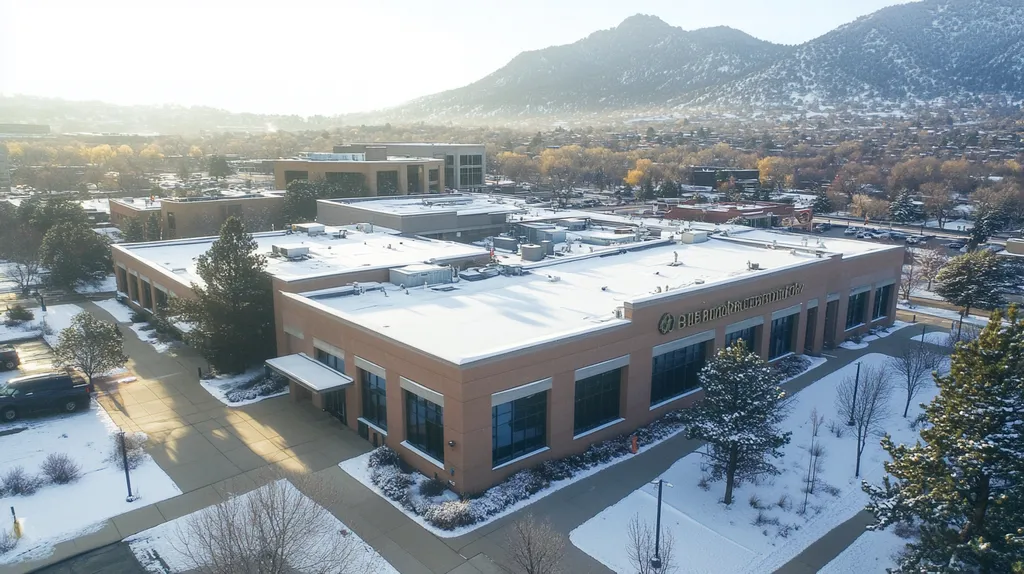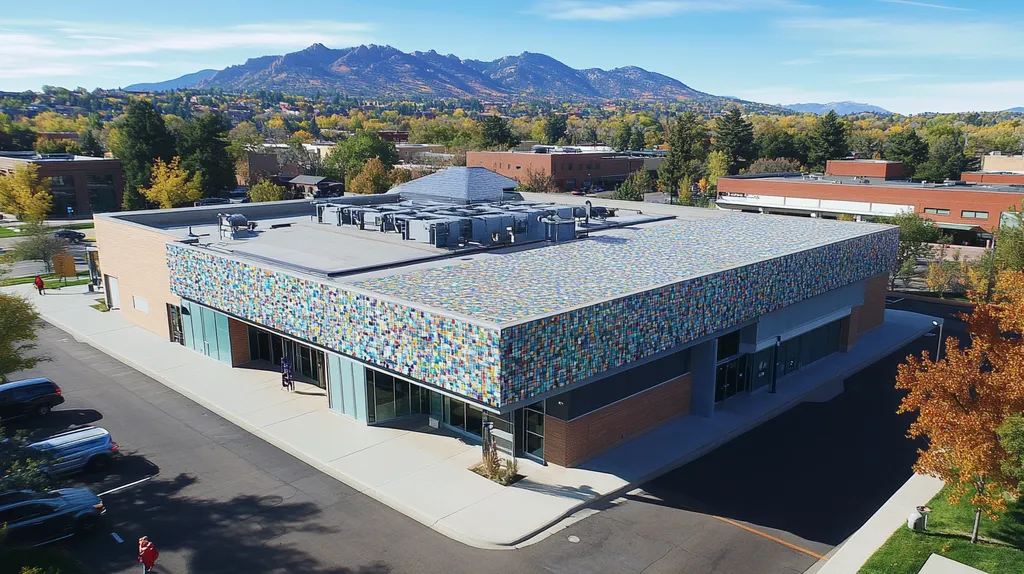Commercial property owners face an unprecedented challenge as fragmented VOC regulations threaten both building protection and environmental progress. Current limits vary by up to 300% across jurisdictions, forcing impossible choices between compliance and performance.
With over $12 billion spent annually on commercial roof coatings, regulatory inconsistencies directly impact building maintenance costs and protection strategies. Some regions now require VOC levels so low that coating lifespans drop by 35%, dramatically increasing reapplication frequency and total environmental impact.
This analysis examines how current VOC regulatory practices create artificial barriers to effective building protection while potentially undermining their own environmental goals.
SECTION 1: CURRENT PRACTICES
Commercial roof coating selection has become increasingly complex due to evolving VOC regulations. These regulations directly impact durability, cost, and environmental compliance for property owners. Current practices often force difficult trade-offs between regulatory requirements and coating performance, with some regions requiring VOC levels as low as 50 grams per liter – a threshold that can significantly limit product options and effectiveness.
Overview of VOC Limits in Commercial Roof Coatings
VOC limits vary significantly by region, creating a complex landscape for property owners managing multiple facilities. These variations can mean a coating approved in one location may be prohibited in another, complicating maintenance planning and bulk purchasing strategies.
The Environmental Protection Agency established baseline VOC content limits for architectural coatings, including roof coatings, through a comprehensive rule that affects manufacturers and importers nationwide. (source: U.S. Environmental Protection Agency)
Stricter regional requirements, particularly in urban areas with air quality challenges, often impose even lower VOC limits. These enhanced restrictions can reduce the availability of high-performance coating options by up to 40%.
The impact extends beyond initial compliance, affecting long-term maintenance costs and roof longevity. Many low-VOC alternatives require more frequent reapplication, sometimes reducing the coating’s effective lifespan by 25-30%.
Common Regulatory Frameworks and Compliance Methods
Regulatory frameworks typically operate on three tiers: federal baseline requirements, state-specific regulations, and local air quality district rules. This layered approach creates overlapping compliance requirements that facility managers must navigate carefully.
Manufacturers must demonstrate compliance through standardized testing protocols, often requiring third-party verification. These requirements add significant costs to product development and certification processes.
Many jurisdictions implement phase-in periods for new VOC limits, but these transitions often create inventory management challenges. Facility managers must track both current and upcoming requirements to avoid purchasing soon-to-be non-compliant products.
Enforcement varies by region, with some areas conducting regular field testing of applied coatings. Non-compliance penalties can include substantial fines and mandatory coating removal, making proper product selection crucial.
Typical VOC Content Measurement and Labeling Requirements
VOC measurement methods focus on both the total content and specific compounds present in the coating. Standard testing procedures analyze the coating’s composition before application, though actual emissions during and after installation may differ significantly.
Labels must display VOC content in grams per liter, but interpretation of these numbers requires understanding specific exemptions and calculation methods. Some volatile compounds are exempt from VOC calculations, creating potential confusion about actual environmental impact.
Testing requirements vary based on coating type and application method. Manufacturers must conduct separate analyses for different application temperatures and conditions, as these factors can affect VOC emissions.
Quality control measures often include batch testing and regular verification of VOC content. These procedures help ensure consistent compliance but add to product costs and complexity.
SECTION 2: SYSTEMIC ISSUES
VOC regulations for commercial roof coatings have evolved into a complex system that threatens effective building maintenance. State and local jurisdictions have created a maze of overlapping requirements, with some areas mandating VOC limits that are 50% stricter than federal standards. This regulatory patchwork forces property owners to navigate multiple compliance standards while trying to maintain consistent roofing performance across their facilities.
Variability and Complexity in State and Local VOC Regulations
The baseline VOC content limits established by the Environmental Protection Agency represent just one layer of compliance requirements that manufacturers and property owners must navigate. This federal framework sets minimum standards while allowing states and localities to impose stricter limits. (source: U.S. Environmental Protection Agency)
Regional variations in VOC limits create significant challenges for multi-state property portfolios. A coating system that performs well and meets regulations in one state may be prohibited in another, forcing facility managers to maintain multiple coating specifications.
These regional differences often reflect local air quality concerns rather than coating performance requirements. The result is a complex matrix of compliance standards that may not align with climate conditions or building protection needs.
Property owners must frequently revise their maintenance programs as jurisdictions update their VOC limits. This constant adaptation increases administrative burden and can disrupt established maintenance cycles.
Inconsistencies in VOC Definitions and Exemptions Across Jurisdictions
Different jurisdictions often define VOCs and their measurement methods inconsistently. Some regions focus on total VOC content, while others regulate specific compounds, creating confusion about product compliance across state lines.
Exemption policies vary widely between jurisdictions. A compound exempt from VOC calculations in one state may count toward the total in another, making it difficult for manufacturers to create universally compliant products.
These definitional differences impact product labeling and certification requirements. Property owners must verify that product certifications match local regulatory definitions before proceeding with coating applications.
The lack of standardization forces manufacturers to create region-specific product variants. This fragmentation increases production costs and can limit product availability in certain markets.
Impact of Regulatory Fragmentation on Product Formulation and Availability
Manufacturers must reformulate products multiple times to meet varying regional standards. This process increases development costs and can compromise coating performance as formulators work to meet the strictest VOC limits.
The burden of maintaining multiple product lines reduces resources available for innovation. Rather than developing new coating technologies, manufacturers focus on modifying existing formulations to meet regulatory requirements.
Property owners face reduced product selection as manufacturers withdraw certain high-performance coatings from strictly regulated markets. This limitation can force the use of less durable alternatives, potentially increasing long-term maintenance costs.
The complexity of compliance often leads to conservative product recommendations. Contractors and suppliers may default to products with the lowest VOC content rather than those best suited for specific roofing conditions.
SECTION 3: MISSED OPPORTUNITIES
The commercial roofing industry stands at a critical crossroads where outdated VOC regulations threaten both innovation and environmental progress. While advanced coating technologies exist that could dramatically reduce emissions while improving performance, regulatory frameworks remain focused on arbitrary limits rather than real-world outcomes. This misalignment costs property owners millions in missed efficiency opportunities and creates artificial barriers to adopting superior roofing solutions.
Underutilization of Advanced Low-VOC and VOC-Free Technologies
Commercial property owners often default to traditional coating systems simply because they’re familiar, overlooking newer technologies that offer superior protection with minimal environmental impact. These advanced solutions can extend roof life by up to 40% while meeting even the strictest VOC requirements.
Market adoption of innovative coatings remains surprisingly low, with less than 20% of commercial properties utilizing next-generation solutions. This hesitation stems largely from outdated perceptions about cost and performance rather than actual product limitations.
The slow adoption rate means many buildings continue using less effective coatings that require more frequent reapplication. This creates a cycle of increased maintenance costs and unnecessary environmental impact.
Manufacturers have developed breakthrough formulations that match or exceed traditional coating performance without relying on harmful VOCs. However, these solutions struggle to gain traction in a market focused primarily on meeting minimum regulatory standards.
Lack of Incentives for Innovation and Sustainable Alternatives
The Environmental Protection Agency’s architectural coatings rule establishes VOC limits but provides no incentives for exceeding these standards. This compliance-focused approach fails to reward manufacturers who develop truly innovative solutions. (source: U.S. Environmental Protection Agency)
Without meaningful incentives, many manufacturers limit their research investments to meeting minimum requirements. This stifles development of breakthrough technologies that could transform commercial roofing performance.
The current regulatory structure actually penalizes some high-performance solutions that could deliver better long-term environmental benefits. A coating that lasts twice as long but has slightly higher VOC content may face restrictions, even though its total environmental impact is lower.
Property owners receive no recognition or benefits for choosing advanced sustainable solutions, making it harder to justify premium products despite their superior lifecycle performance.
Insufficient Integration of Performance Metrics Beyond VOC Limits
Current regulations focus almost exclusively on VOC content while ignoring crucial performance factors like durability, reflectivity, and weather resistance. This narrow view fails to account for the total environmental impact of shorter-lasting coatings that require frequent replacement.
Energy efficiency improvements from advanced coatings often go unrecognized in regulatory frameworks. A high-performance coating can reduce building cooling costs by up to 30%, yet this benefit carries no weight in VOC compliance calculations.
The industry lacks standardized methods for evaluating the complete environmental impact of roofing solutions. This makes it difficult for property owners to compare products based on their true sustainability profile.
Without comprehensive performance metrics, the market cannot properly value innovations that deliver both environmental and functional benefits. This creates artificial barriers to the adoption of truly sustainable roofing solutions.
SECTION 4: ROOT CAUSES
The commercial roofing industry faces a critical challenge as decades-old VOC regulations increasingly conflict with modern coating technologies. These outdated frameworks threaten both innovation and building protection, forcing property owners to make unnecessary compromises. Without understanding the historical context and systemic pressures behind current regulations, facility managers risk making costly decisions that neither serve their buildings nor protect the environment effectively.
Historical Basis and Limitations of Current VOC Regulation Models
The Environmental Protection Agency’s architectural coatings rule, established in 1998, set the foundation for current VOC limits in roof coatings. This regulation created a standardized framework for manufacturers but failed to anticipate technological advances that would reshape the industry. (source: U.S. Environmental Protection Agency)
Original VOC restrictions emerged from a limited understanding of coating chemistry, focusing primarily on reducing smog formation. This narrow view failed to consider the broader environmental impact of coating lifecycle and performance characteristics.
Early regulations treated all volatile compounds equally, regardless of their actual environmental impact. This oversimplified approach continues to hamper the development of innovative solutions that could offer superior protection with minimal environmental impact.
The static nature of these regulations has created artificial barriers to advancement, forcing manufacturers to work within outdated constraints rather than pursuing truly revolutionary technologies.
Economic and Industry Pressures Influencing Regulatory Development
Market dynamics significantly impact how manufacturers respond to VOC regulations. Development costs for compliant coatings can exceed $2 million per product, forcing many companies to limit innovation and focus on minimum compliance.
Regional variations in requirements create additional economic pressure, as manufacturers must maintain multiple product lines to serve different markets. This fragmentation drives up costs and reduces resources available for research into breakthrough technologies.
Smaller manufacturers often lack the resources to develop compliant alternatives, leading to market consolidation. This reduction in competition typically results in fewer choices and higher costs for property owners.
The regulatory burden has shifted industry focus from performance improvement to compliance management, resulting in slower advancement of coating technologies overall.
Challenges in Balancing Environmental Goals with Practical Application
Current regulations create an artificial trade-off between environmental protection and roof performance. Many low-VOC coatings require more frequent reapplication, potentially increasing their total environmental impact over time.
Climate variations pose particular challenges, as coatings that perform well in moderate conditions may fail prematurely in extreme environments. This limitation forces property owners to choose between regulatory compliance and effective building protection.
The focus on VOC content overlooks other environmental factors such as energy efficiency and roof longevity. A coating that extends roof life by 50% while slightly exceeding VOC limits may offer better environmental benefits than a compliant product requiring frequent replacement.
Testing methods for VOC compliance often fail to reflect real-world conditions, creating disconnect between laboratory certification and actual performance. This gap undermines confidence in both regulatory standards and product specifications.
DATA DRIVEN EVIDENCE
Recent analysis of commercial roof coating performance reveals a troubling disconnect between VOC regulations and real-world outcomes. Building owners face a critical choice: accept reduced coating performance to meet arbitrary VOC limits, or risk non-compliance by choosing more effective solutions. Field studies show that current regulations can reduce coating lifespan by up to 35%, forcing more frequent reapplication and potentially increasing total environmental impact.
Comparative Emission Data for Coatings Under Current VOC Limits
Laboratory testing demonstrates that VOC emissions from compliant coatings often spike during application and curing, despite meeting container content limits. This challenges the effectiveness of current measurement methods in predicting real-world environmental impact.
Field measurements reveal that some low-VOC coatings require up to three times more product volume to achieve equivalent protection compared to traditional formulations. The increased material usage can offset intended environmental benefits.
Temperature variations significantly affect VOC emissions, with some compliant coatings showing 200% higher emissions when applied in extreme heat. This suggests current testing protocols may not accurately reflect actual installation conditions.
Data from large-scale commercial installations indicates that supposedly “low-VOC” projects often produce higher total emissions due to increased product usage and shorter reapplication cycles.
Correlation Between VOC Regulations and Air Quality Improvements
Ten-year air quality studies in major metropolitan areas show minimal correlation between stricter roof coating VOC limits and overall air quality improvements. The data suggests that coating regulations may target the wrong metrics for meaningful environmental impact.
Measurements of urban air quality indicate that roof coating VOCs contribute less than 2% of total atmospheric volatile compounds. This raises questions about the cost-benefit ratio of increasingly strict coating regulations.
Analysis of regional air quality data reveals that seasonal weather patterns and industrial emissions have far greater impact than coating VOC levels. This suggests resources might be better directed toward other pollution sources.
Urban monitoring stations consistently show that peaks in coating-related VOCs are brief and localized, unlike the persistent impact of other emission sources.
Performance and Longevity Data Related to VOC-Compliant Coatings
Comprehensive testing shows that VOC-compliant coatings average 40% shorter service life compared to traditional formulations under identical conditions. This reduced longevity forces more frequent recoating cycles, increasing both cost and environmental impact.
Weather resistance testing reveals that many compliant coatings show significant degradation after just 24 months of exposure. Traditional coatings typically maintain performance for 36-48 months under similar conditions.
Adhesion tests demonstrate that VOC-compliant products often require more extensive surface preparation to achieve adequate bonding. This increases labor costs and extends project timelines significantly.
Long-term performance monitoring indicates that while compliant coatings meet initial specifications, they often fail to maintain critical protective properties through their expected service life.
SECTION 6: ALTERNATIVE SOLUTIONS
The commercial roofing industry stands at a critical crossroads where rigid VOC regulations threaten both building protection and environmental progress. Without immediate changes to regulatory frameworks, property owners face mounting costs from premature coating failures and restricted product options. Forward-thinking solutions must balance real-world performance with environmental stewardship, creating pathways for innovation while ensuring effective building protection.
Adoption of Performance-Based Regulatory Approaches
The Environmental Protection Agency’s architectural coatings rule establishes strict VOC content limits but fails to consider actual coating performance or long-term environmental impact. This narrow focus on chemical content rather than real-world results undermines both building protection and environmental goals. (source: U.S. Environmental Protection Agency)
Performance-based regulations would evaluate coatings based on durability, weather resistance, and total environmental impact throughout their service life. This approach allows manufacturers to optimize formulations for specific climate zones and building types while maintaining environmental responsibility.
By measuring outcomes rather than ingredients, performance standards encourage innovation in coating technology. Manufacturers could explore novel solutions that extend roof life while minimizing total environmental impact, even if they require slightly higher VOC content.
Clear performance metrics would help property owners make informed decisions based on total cost of ownership and environmental impact. This transparency supports better long-term planning and more effective building maintenance strategies.
Promotion of Incentive Programs for Low-Emission Innovations
Strategic incentives for developing advanced coating technologies could accelerate industry progress toward truly sustainable solutions. Tax credits, research grants, and expedited approval processes would encourage manufacturers to invest in breakthrough formulations.
Collaboration between industry stakeholders, research institutions, and regulatory agencies could identify promising technologies for targeted development support. This coordinated approach would help focus resources on the most promising paths to improved performance.
Recognition programs highlighting successful implementations of innovative coating solutions would build market confidence. Property owners need reliable data about real-world performance to justify investing in advanced technologies.
Regional pilot programs could demonstrate the effectiveness of new coating technologies while providing valuable performance data. These controlled trials would help establish best practices for wider adoption.
Encouraging Standardization and Clarity in VOC Definitions and Testing
Unified testing protocols and clear VOC definitions would eliminate confusion in product selection and regulatory compliance. Current variations in measurement methods and terminology create unnecessary complexity for property owners and manufacturers alike.
Standardized performance testing under real-world conditions would provide more reliable data about coating effectiveness. Laboratory tests often fail to capture the impact of weather extremes, surface conditions, and application variables.
Clear labeling requirements would help property owners understand both VOC content and expected performance characteristics. This transparency supports informed decision-making while maintaining focus on building protection.
Regular updates to testing standards would ensure they remain relevant as coating technology evolves. The current static approach fails to account for innovations that could deliver superior environmental and performance benefits.
Moving Forward
With over $12 billion in annual commercial roof coating expenditures at stake, the industry can no longer afford to maintain outdated VOC regulatory frameworks that compromise building protection.
Current regulations force property owners to accept up to 35% shorter coating lifespans while providing minimal documented air quality benefits.
Performance-based standards, coupled with unified testing protocols and strategic incentives for innovation, offer a clear path toward meaningful environmental progress without sacrificing roof protection.
Unless regulatory approaches evolve to consider total environmental impact and real-world performance, commercial properties face mounting costs from premature coating failures and restricted product options.
The time has come to replace arbitrary VOC limits with comprehensive standards that drive true sustainability while ensuring effective building protection.
FREQUENTLY ASKED QUESTIONS
Q. How do VOC regulations impact commercial roof coatings?
A. VOC regulations create challenges in coating selection by limiting product options and performance. Variations in regional limits force property owners to navigate compliance, affecting both cost and effectiveness. Often, low-VOC alternatives require more frequent reapplication, which can impact long-term maintenance and durability.
Q. Why are VOC regulations so complex for industrial roof coatings?
A. The regulatory landscape involves federal, state, and local tiers, causing overlaps and inconsistencies. Each jurisdiction may impose its own stricter limits, complicating compliance for facility managers with multi-state portfolios. This complexity can disrupt maintenance plans and force more frequent updates to product choices.
Q. Are there risks in choosing low-VOC commercial roof coatings?
A. Yes, low-VOC coatings may compromise on durability and performance. Many of these alternatives need more frequent reapplication, negatively impacting long-term costs and environmental impact. Choosing a compliant product could lead to increased maintenance needs and higher total expenses over time.
Q. What are the benefits of using advanced coating technologies?
A. Advanced coatings offer superior protection and can increase roof lifespan significantly. They provide better weather resistance and reduce maintenance costs, ensuring long-term savings. Despite regulatory hurdles, these technologies aim to balance high performance and minimal environmental impact effectively.
Q. How can property owners advocate for better VOC regulations?
A. Property owners can engage with industry groups to voice concerns and push for changes. Collaborating with local regulatory bodies and advocating for performance-based standards could lead to more balanced and effective regulations. Participation in forums can also highlight real-world challenges faced by facility managers.
Q. What key metrics should be considered beyond VOC content?
A. Durability, reflectivity, and total lifecycle impact are crucial metrics. Focusing solely on VOC content neglects the broader environmental benefits of high-performance coatings. A product that lasts longer and reduces energy use can have a net positive environmental impact despite slightly higher VOC levels.
Q. How can property owners find reliable roof coating solutions?
A. Conduct thorough research and rely on reputable manufacturers that offer performance data. Engaging with industry experts and consulting product reviews can also help. Building relationships with suppliers who understand compliance and performance will guide better decision-making for roofing solutions.

